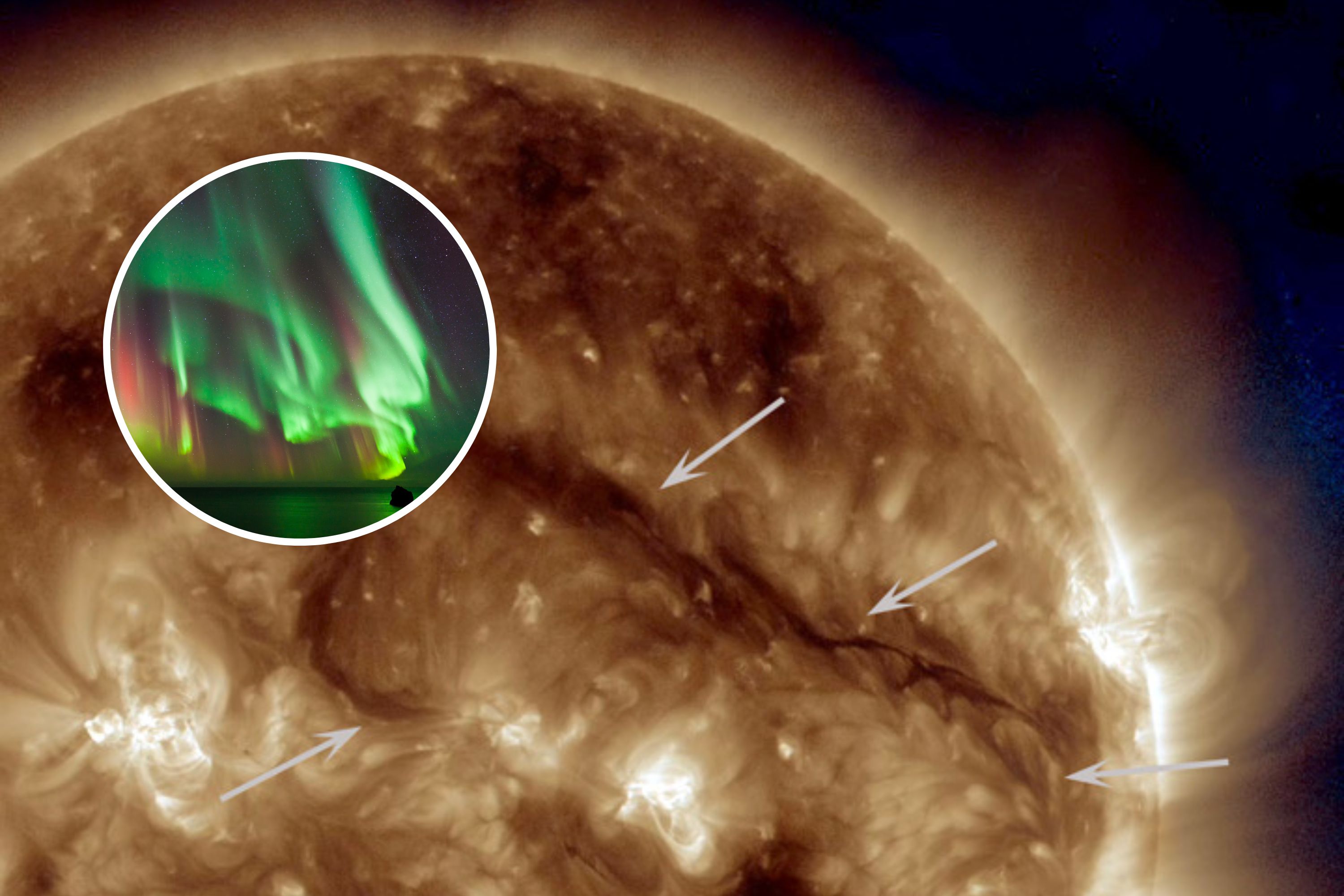The sun just burped out a plume of “dark plasma,” and it’s making its way toward Earth!
This coronal mass ejection (CME) was launched from a magnetic filament on the sun and is expected to trigger a geomagnetic storm in Earth’s atmosphere on Tuesday. Forecasts indicate this storm will reach a G2 level, or “moderate” strength, lighting up the northern lights in areas as far south as New York and Idaho.
CMEs are massive clouds of solar plasma and magnetic fields expelled from active regions on the sun’s surface, like sunspots and those magnetic filaments. Solar filaments are long structures made of cooler, denser plasma that are held above the sun’s surface by magnetic forces. When these magnetic fields become unstable, they can erupt and release significant amounts of solar material into space.
In this case, because it comes from a cooler filament, the CME contains “dark plasma.” While solar plasma is typically hot and emits light at various wavelengths, dark plasma appears cooler and less visible at higher-energy wavelengths. However, it remains quite hot compared to temperatures we experience on Earth.

NASA/SDO / ISTOCK / GETTY IMAGES PLUS
When these CMEs interact with Earth’s magnetic field, they can cause geomagnetic storms and allow auroras to be visible much farther from the poles. These storms are rated from G1 to G5, with G5 being the strongest and rarest. Recently, a G5 storm in May illuminated the sky with northern lights across all 50 U.S. states, marking the first such event since 2003.
“For magnetic storms, unique conditions on the sun combined with the solar wind’s magnetic field are crucial, making it hard to predict what happens when the solar wind meets Earth’s magnetic field,” says Connors.
CME influences from a filament eruption that occurred early on 8 Sep should arrive by midday on 10 Sep and will likely cause moderate geomagnetic storming effects. Any geomagnetic storming effects that linger into 11 Sep (UTC) will likely taper off into minor storming levels. pic.twitter.com/4AdY506yOb
— NOAA Space Weather Prediction Center (@NWSSWPC) September 8, 2024
The upcoming storm is expected to remain at a maximum of G2 strength.
According to the National Oceanic and Atmospheric Administration’s Space Weather Prediction Center, “High-latitude power systems may encounter voltage alarms, and prolonged storms could potentially damage transformers. Additionally, HF radio signals might fade in high-latitude regions, with auroras seen as far south as New York and Idaho (typically around 55° latitude).”
